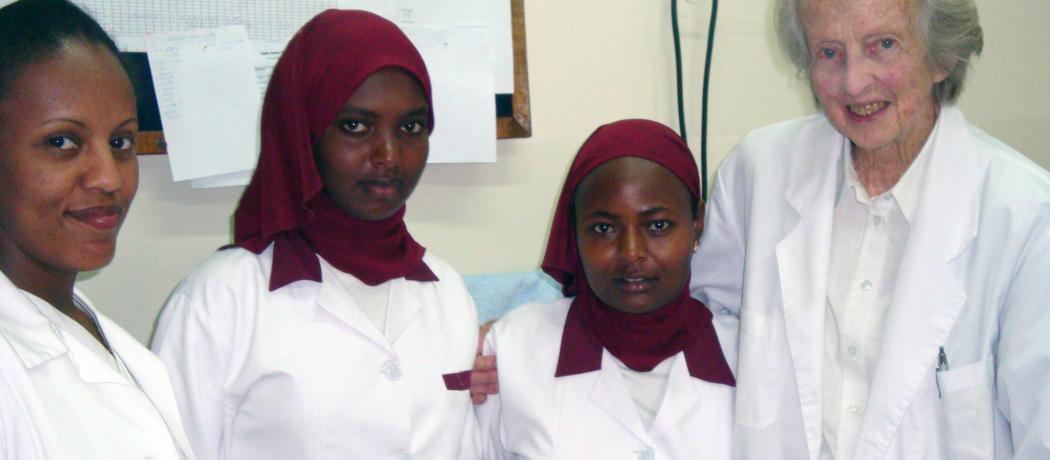We are living in a difficult time. It is wonderful to hear the heartfelt thanks for the heroism of our medical, nursing, and other health care colleagues, and the work of our health care system in the fight against our invisible viral foe. It was in this context that I read about Dr Hamlin’s death and I am not ashamed to admit that I ended up with tears in my eyes. In Ethiopia she was called “Mother.”
Who was Dr Catherine Hamlin? She was an Australian gynecologist, born in 1924, married to Reg Hamil, also a physician. In 1958 the Hamlins answered an advertisement placed in The Lancet by the Ethiopian government for an obstetrician to establish a midwifery school in Addis Ababa. In 1959 the Hamlins, including their 6-year-old son, Richard, arrived to the Princess Tsehay Hospital. To their surprise the hospital had more pressing needs than a midwifery school or teaching midwives. Each morning young women, many in their early teens, were brought to the gates of the hospital in desperate conditions.
In Ethiopia child marriages were still encouraged, and many girls in their teens found themselves pregnant. Owing to malnutrition their bodies were often small and their labor went on for days, pushing and pushing. The protracted labor left them with obstetrical injuries not seen in Europe, America, or Australia since the late 1800s. The last fistula hospital in the US was closed in 1925. Ruptured bladders and vaginas, torn rectums, obstetrical fistulas left the young women with urine and bowel content draining. Husbands often left, families abandoned them.
The Hamlins had to go back to old textbooks, reading how American slave women with similar conditions were treated in the 1850s. Dr Hamlin was prepared to experiment. She was cutting away scars, used fat-pad grafts to repair the bladder, created reinforcement between the bladder and the vagina, used muscles from the leg to firm up the urethra.
Some patients died, but many recovered, and by the late 1900s more than 90% did well following various surgical procedures. Dr Hamlin’s husband died in 1993 but Dr Hamlin carried on through the devastating famines in Ethiopia and during the political turmoil leading to the overthrow of the Emperor. By the early 2000s the midwifery school, the reason the Hamlins went to Ethiopia in 1959, was operational and over 25 000 patients have been treated at the hospital.
Dr Hamlin retired at age 92 when she could no longer stand at the surgical table without leaning on her cane. She considered herself an ordinary woman. The Ethiopians called her “Mother” and thought of her as a saint.
Dr Catherine Hamlin died on 18 March 2020 at the age of 96.
—George Szasz, CM, MD
Suggested reading
The Economist. Catherine Hamlin died on March 18th. Accessed 6 May 2020. www.economist.com/obituary/2020/04/08/catherine-hamlin-died-on-march-18th
Wikipedia. Catherine Hamlin. Accessed 5 May 2020. https://en.wikipedia.org/wiki/Catherine_Hamlin
This post has not been peer reviewed by the BCMJ Editorial Board.

